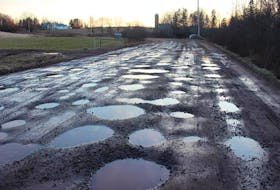Sir Winston Churchill once declared that “The best argument against democracy is a five-minute conversation with the average voter”. Back then the average voter had limited access to information on the key issues of the day. As a result, most voters supported political parties that empathized with their economic situations in life, and not necessarily focused on whatever the issues of the day might be.
Fast forward to this pre-election period where more voters now have on-line access to information and opinions on all manner of topics and can voice his or her views for all the world to hear, like them or not, via social media.
It’s debatable whether this new breed of voters will be the salvation of democracy, but they have the right, and now the means to question our current political system and how we elect our leaders.
Because of this, I believe we will be witness to some fundamental shifts in how we vote in this upcoming federal election. I would expect to see voters less interested in the ideologies of the two main political parties, which are becoming less relevant in grappling with today’s challenges.
You only need look at the newly-minted election slogans for the Liberals – “Choose Forward”, and the Conservatives - “It’s Time for You to Get Ahead”, to see the challenge each party has in articulating common sense platforms.
The Greens' slogan - "Not left. Not right. Forward together" seems to make more sense in rejecting worn-out political ideologies as panaceas. While the NDP is still working on its slogan, some wag has suggested that “Let’s go Backward” might be preferable to their current predicament.
The pundits agree that the coming election will see a minority government formed by one or other of the two main parties. Support for players such as the Greens, PPCs and BQs, and a growing number of “independents” will make it highly unlikely we will see a majority national government of any stripe for the foreseeable future.
And I believe this will be for the better. Majority governments are not motivated to develop collaborative solutions that may be more effective in satisfying a broader range of Canadians. Which raises the issue of “proportional representation”, whereby the percentage of seats a party would have in our 338-seat parliament would reflect the percentage of people who actually voted for that party.
Many were disappointed when a commitment to introduce proportional representation was so badly fumbled by the current government early in its term. Remember our P.M.’s vow that the 2015 election would be our last “first past the post” election?
In this coming election we will have at least five political parties competing for seats in our parliament, and there may be additional players to come in future years. Under current rules, a member of a political party can only occupy a seat in parliament by winning more votes than their competitors for that seat, say in the Cumberland / Colchester electoral district.
There are now 87 democratic countries in the world using proportional representation in their elections, including older and wiser countries such as Sweden, Norway, Denmark, and the Netherlands. In those nations every vote contributes to ensuring more collaboration, and an electorate more satisfied with quality solutions.
In both Sweden and Norway for example there happen to be eight parties holding seats according to the proportion of the votes they each picked up in the most recent election, providing they won a minimum of four per cent of the total vote nationally. Both countries have a couple of dominant parties but rely on involvement from the smaller players to get things done and produce workable collaborative solutions.
Returning to the Canadian scene, there is currently a disincentive for some voters to vote for the newer smaller entrants in Canada, such as the Greens, knowing that it is unlikely they would win many seats under “first past the post rules”, even though they might achieve a sizeable vote count in total.
The Green party is currently polling at 10.4 per cent with the Peoples Party of Canada at 3.1 per cent, and the BQ at 4.2 per cent., not to forget the NDP at 13.8 per cent.
Under the two Scandinavian schemes every vote for these parties would count towards awarding seats more proportionally , making for a more representative parliament than might otherwise be the case.
In fact, it might be smart for these emerging parties to encourage voters to vote in this coming election as if proportional representation was in place, to support the case for future voting reforms.
Finally, in these troubled times I would not be surprised to see a marked increase in the voter turnout from the 2015 federal election level of 68.5 per cent of eligible voters. It’s becoming more difficult for responsible Canadians to sit on the sidelines while critical national issues such as the economy, climate change and immigration growth are up for debate, and common-sense collaborative solutions are not forthcoming from our current leaders.
Alan Walter is a retired professional engineer living in Oxford. He was born in Wales and worked in Halifax. He spends much of his time in Oxford, where he operates a small farm. He can be reached at [email protected].

![['Did You Know That with Alan Walter']](https://saltwire.imgix.net/did-you-know-that-with-alan-walter-3009037.jpg?cs=srgb&fit=crop&h=568&w=847&dpr=1&auto=compress%2Cformat%2Cenhance)







